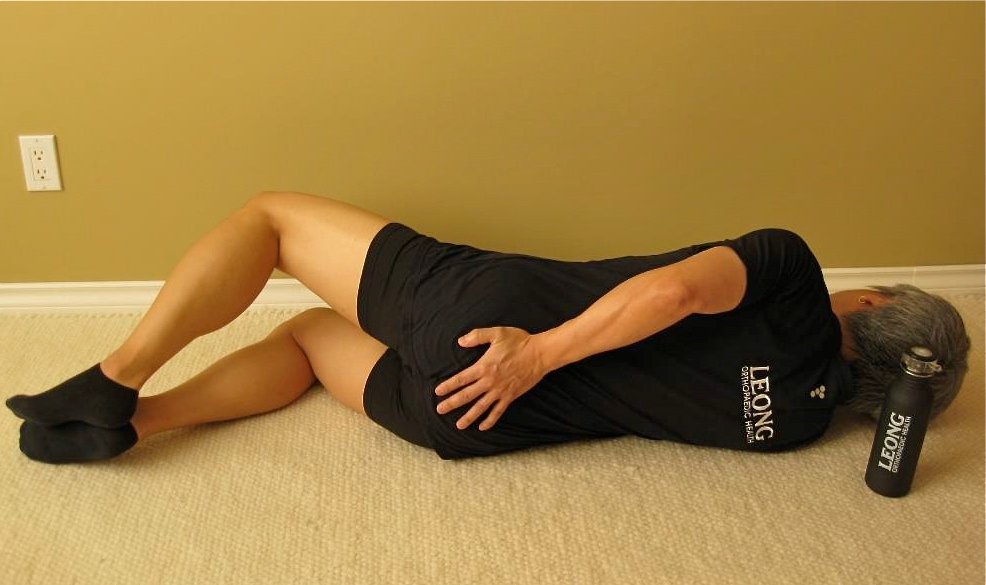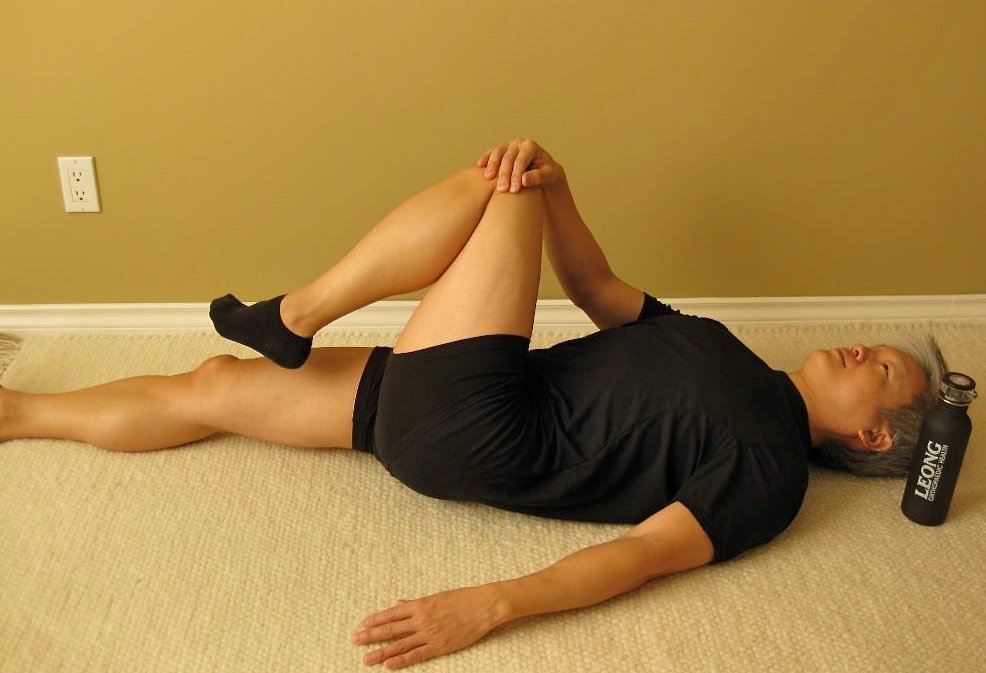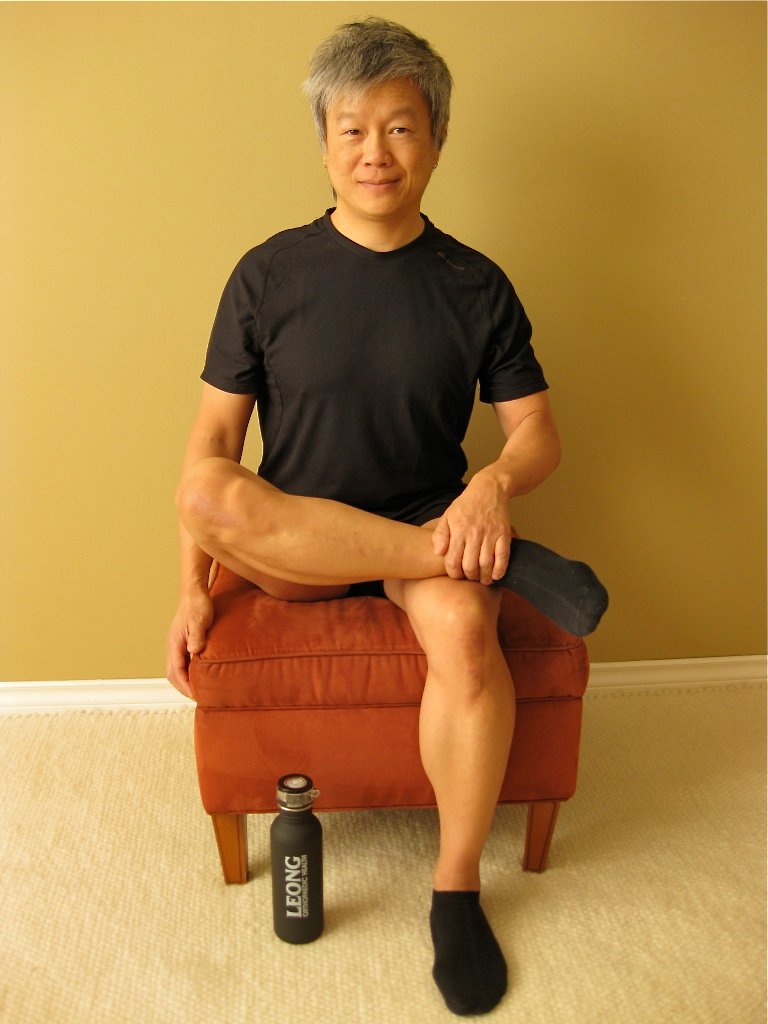Are you suffering from hip pain? Lower-back pain? Or a pain in the butt? Do you have pain travelling down the back of your thigh (sometimes indicating Sciatica)?
Most often, cause is weakened Gluteus Medius and Gluteus Minimus muscles.
What Causes Weak Gluteus Medius and Gluteus Minimus Muscles?
- Standing on one leg with the opposite hip dropped for extend periods.
- Walking perpendicular to an incline (such as on a beach that inclines down to the water).
- A leg-length discrepancy.
- Morton’s foot structure (2nd toe being the longest) causing differentiation in walking (gait).
When the Gluteus Minimus and Gluteus Medius muscles are weak, the industrious Piriformis muscle tries to compensate by overexerting itself, attempting not only to do its own job, but that of the Gluteus Minimus and Gluteus Medius, and eventually, it spasms, causing pain.
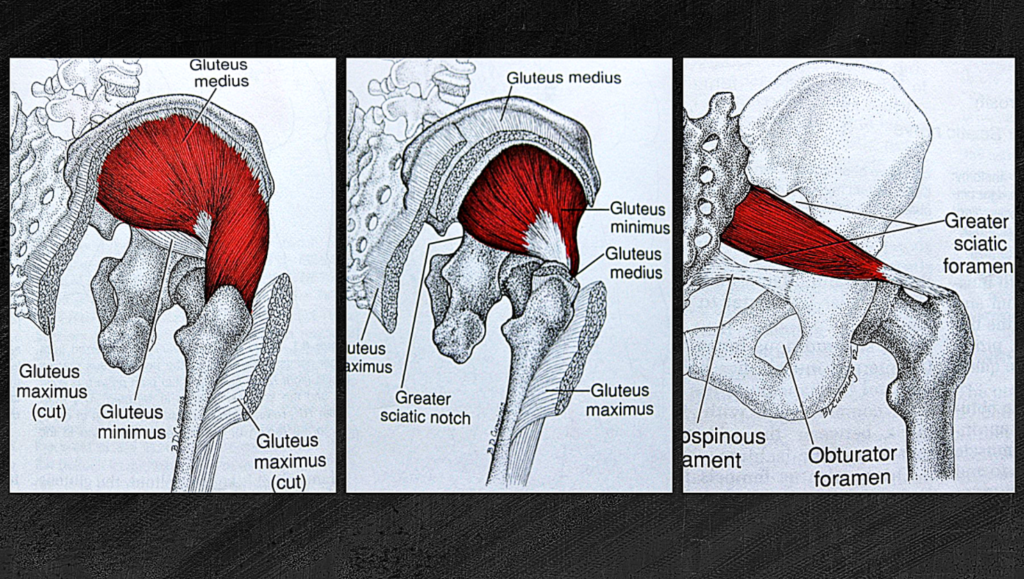
Pain Referral Patterns
Pain may travel to areas far reaching from the hip as the Gluteus Medius, Gluteus Minimus, and Piriformis send out different pain-referral patterns. At different times you may feel:
- Only a small part of one pain pattern,
- One complete pain pattern,
- A combination of two or three of the pain patterns, or
- Nothing at all.
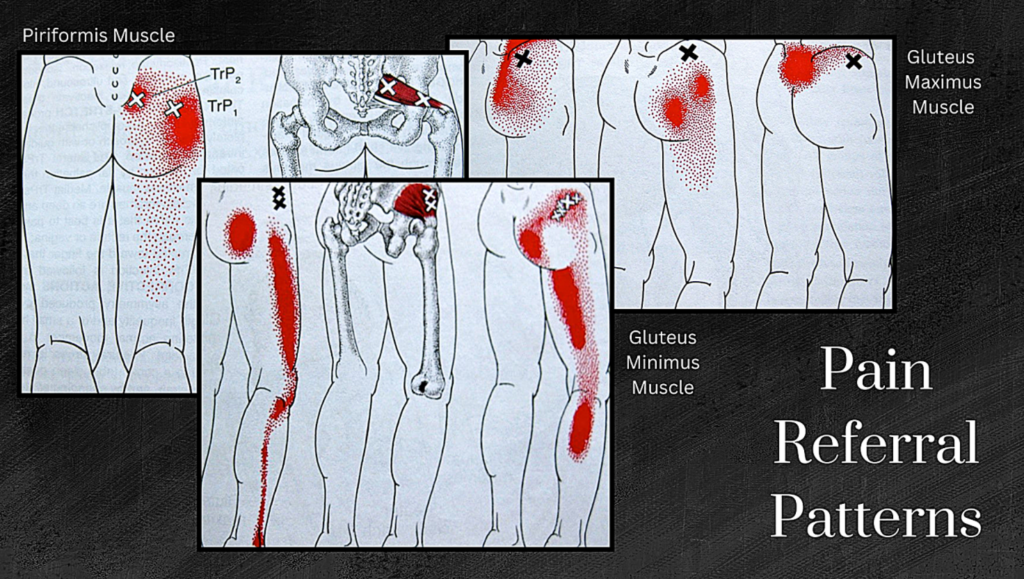
Muscles tugging in the hip area may cause damage within the hip joint itself. Prevent irreparable damage by dealing with this issue as soon as you feel hip pain or discomfort.
Gluteus Medius and Gluteus Minimus Strengthening
You want your hip pain to stop! The only way to accomplish that is by making the Gluteus Medius and Gluteus Minimus do their job. One strengthening exercise that isolates these two muscles is called The Clam:
- Lie on your side.
- With your bottom arm, cradle your head.
- Make sure your spine is in a straight line.
- Knees bent.
- Keep your feet “glued” together.
- Lift up the top knee as high as it will go without rolling your top hip backwards.
- Work your way up to 25 repetitions.
- Repeat on opposite side.
- Note if there’s a difference in strength between your left and right sides.
Your Hips Must Remain “Stacked”
Ensure your top hip is a little more forward than your bottom hip. If your Glutes are weak, your body will automatically roll your top hip back to allow another muscle to take over.
Don’t let this happen!
If your top hip rolls back, even a little, a different muscle is worked, possibly exacerbating your problem.
Prevent this mistake by snugging your bottom hip against a door (or a wall without a baseboard). Place your hand between the wall and your top hip so it’s impossible for it to roll back.
Gluteal Stretch
Immediately after strengthening any muscle, it’s important to stretch it.
- Lie on your back.
- One leg straight
- Bring other knee towards the chest.
- Grasp knee with opposite hand and pull towards your opposite shoulder.
- Do not twist your torso. Ensure both buttocks stay in contact with the ground.
- Hold for one minute by the clock.
- Repeat on the other side.
- You should feel this stretch across your butt.
Piriformis Stretch
When the Piriformis muscle is in spasm, a slight stretch can provide some relief. But the Piriformis is delicate, sensitive, and easily torn. Warning: If you stretch the piriformis too fast or too hard, the spasm will increase and the muscle will possibly tear. Stretch gently!
- Sitting on a low stool or ottoman.
- Place your ankle overtop your opposite knee.
- Bottom leg: ensure ankle stays directly under the knee.
- Ensure lower back remains straight and even arched.
- Stop when you feel a slight stretch across your butt and/or in your hip.
- When the stretch sensation disappears, increase it by arching your lower back and/or leaning forward into another slight stretch.
- Repeat on the other side.
Note: the piriformis responds best to a gentle stretch held a long time. Set yourself up comfortably so that you can hold the stretch. Perhaps drinking a cup of coffee, reading a book, or watching a movie. Anything that will allow you to comfortably remain in this very gentle stretch.
Piriformis Muscle and Sciatic Nerve Complications
Even if the Gluteus Medius and Gluteus Minimus muscles are strong, the Piriformis muscle can still spasm in response to:
- Prolonged sitting.
- Twisting sideways while bending and lifting a heavy weight.
- Forceful rotation with the bodyweight on one leg.
- Sitting on one foot or on a wallet.
- Slight displacement of the Sacroiliac joint.
- Arthritis in the Sacroiliac joint.
- Arthritis in the Hip joint.
Although it’s more uncommon, the Piriformis muscle can spasm so much it presses on the Sciatic nerve causing pain to travel down the back of the leg and possibly into the foot.
There are four possible routes that the two portions of the Sciatic nerve can be threaded in different people!

Complications with the Piriformis muscle and Sciatic nerve
Differential Diagnosis:
Degenerative diseases in the spine of the lower back can also cause entrapment of the nerves. This can be another cause of pain down the back of the leg and/or into the foot.
No body is the same as another. Bone structure differs, requiring muscles, tendons, and ligaments to be different lengths and attach at varying angles. To gain the most success, pay close attention to how each exercise feels.
– LEONG Orthopaedic Health
personal training
by appointment only. Please email:
LeongOrthopaedicHealth@gmail.com
If you like this article, please share it!
All rights reserved; no part of this publication may be reproduced or transmitted by any means, electronic, mechanical, photocopying or otherwise, without prior permission. Copyright 2015


